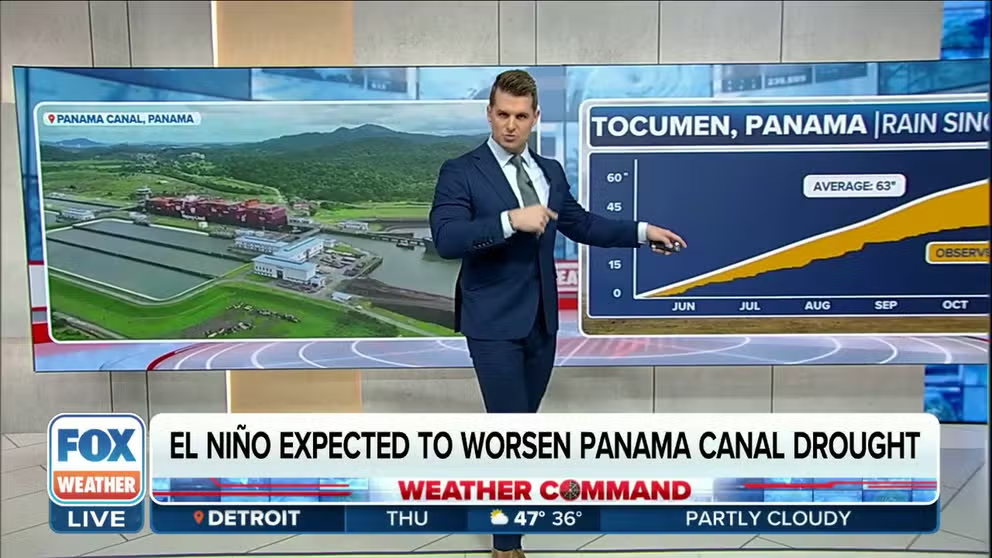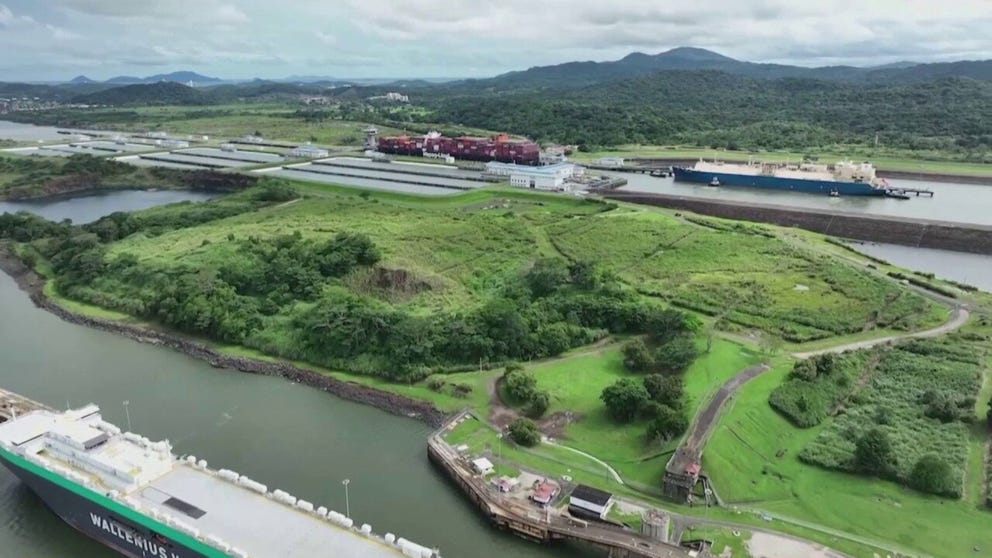Shipping companies offering millions to jump long lines for drought-stricken Panama Canal
Ships passing through the canal are experiencing longer waiting times due to water scarcity. This is causing significant delays and losses for businesses, affecting the trade of energy, consumer goods and food.
Shipping companies spend millions in attempt to get their cargo through Panama Canal
Shipping companies are opening up their pocketbooks in desperate attempts to get their cargo through the Panama Canal in a timely manner, as the canal faces an unprecedented drought, causing its lowest water levels since the mid-1900s.
PEDRO MIGUEL, Panama – Shipping companies are opening up their pocketbooks in desperate attempts to get their cargo through the Panama Canal in a timely manner, as the canal faces an unprecedented drought, causing its lowest water levels since the mid-1900s.
The result has been a severe reduction in the canal's transit capacity and a line that's now dozens of ships long waiting to get through.
Nearly 80 ships aiming to pass through the canal connecting the Pacific and Atlantic oceans are instead dealing with significant delays and losses for businesses, affecting the trade of energy, consumer goods and food.
It takes about 8 to 10 hours to transit the 50-mile-long canal, compared to several weeks to travel around South America's Cape Horn. But now ships are waiting about 1-2 weeks in line, depending on which way they're headed.
Some companies have decided they can't afford the wait, and will now pay exorbitant amounts to bypass the queue, creating competition among vessels.
"Many of them have been LNG shipments (liquefied natural gas) going to Asia as we heard toward the heart of winter," Everstream Analytics chief meteorologist Jon Davis told FOX Weather.
According to Davis, numerous reports have been of firms paying as much as $4 million to move to the front of the line, thus bypassing the wait times.
"Everyone in the market is very aware of this, and other vessels that have also jumped the line," he adds.
HOLIDAY SHOPPING MAY FACE SHIPPING DELAYS AS DROUGHT CUTS CRUCIAL PANAMA CANAL SHIPPING LANE ACCESS
El Niño may make the situation even worse
Davis said the levels of Lake Gatun, the primary feeder lake into the Panama Canal, have improved during November compared to earlier in the fall, but it hasn't been enough.
"Even though the water level improved during November, it is still the lowest of the past 10 years," Davis notes. "Going back further, it is the lowest level for early December of any year going back to 1965."
During the past week, the levels of Lake Gatun have plateaued as a drier pattern has developed across the southern portion of Central America, including Panama.
"This is an item of concern," Davis warns. "The dry season in Panama typically starts during December – sometimes this occurs in early December while at other times it is at the end of the month."
Intensifying drought impacting Panama Canal operations
The Panama Canal operates 365 days a year but due to an intensifying drought and low water levels, ship weights and crossings have been reduced to 32 vessels per day according to operators.
According to Davis, it appears that there won't be much rain in Panama during the next few weeks, based on the upcoming weather pattern – meaning that the dry season is likely starting early this year, which is typical during El Niño years.
"The El Niño continues to strengthen in the equatorial Pacific," he adds. "Because of this, we expect lake levels to decline through the remainder of December."
Entering the dry season in January, levels of Gatun are expected to be the lowest ever recorded, Davis said. Any improvement during the first 3-4 months of 2024 is remote at best.
According to Davis, any hope for an improvement in lake levels and fewer restrictions on the canal won't come until next summer. This coincides with Panama's rainy season, which starts in May or June and lasts through the early autumn months.
"The logistic restrictions (numbers of vessels crossing the Canal and weight) will become more severe prior to the onset of the next wet season – next summer," he said.







